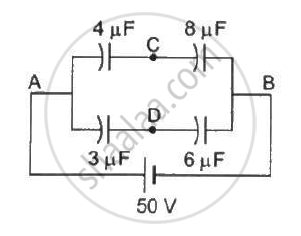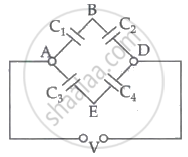Advertisements
Advertisements
प्रश्न
A positively charged particle is released from rest in a uniform electric field. The electric potential energy of the charge ______.
पर्याय
remains a constant because the electric field is uniform
increases because the charge moves along the electric field
decreases because the charge moves along the electric field
decreases because the charge moves opposite to the electric field
उत्तर
A positively charged particle is released from rest in a uniform electric field. The electric potential energy of the charge decreases because the charge moves along the electric field.
Explanation:
Electric potential decreases in the direction of electric field. The direction of electric field is always perpendicular to one equipotential surface maintained at the high electrostatic potential to another equipotential surface maintained at low electrostatic potential.
The positively charged particle experiences electrostatic force along the direction of electric field and hence moves in the direction of electric field. Thus, positive work is done by the electric field on the charge. We know
`W_("electrical") = -ΔU = -qΔV = q(V_("initial") – V_("final"))`
Hence electrostatic potential energy of the positive charge decreases.
APPEARS IN
संबंधित प्रश्न
Take the potential of the point B in figure to be zero. (a) Find the potentials at the points C and D. (b) If a capacitor is connected between C and D, what charge will appear on this capacitor?

Show that electric potential at a point P, at a distance 'r' from a fixed point charge Q, is given by:
`v=(1/(4pi∈_0))Q/r`.
Answer the following question.
The magnitude of the electric field (in NC – 1) in a region varies with the distance r(in m) as
E = 10r + 5
By how much does the electric potential increase in moving from point at r = 11 m to a point at r = 10 m.
Electric potential energy of two point charges q and q0 is ________.
It becomes possible to define potential at a point in an electric field because electric field ______.
A cube of metal is given a positive charge Q. For this system, which of the following statements is true?
From a point charge, there is a fixed point A. At A, there is an electric field of 500 V/m and potential difference of 3000 V. Distance between point charge and A will be ______.
If a conductor has a potential V ≠ 0 and there are no charges anywhere else outside, then ______.
If a conductor has a potential V ≠ 0 and there are no charges anywhere else outside, then ______.
- there must be charges on the surface or inside itself.
- there cannot be any charge in the body of the conductor.
- there must be charges only on the surface.
- there must be charges inside the surface.
The potential difference between points B and E of the circuits is ______.

